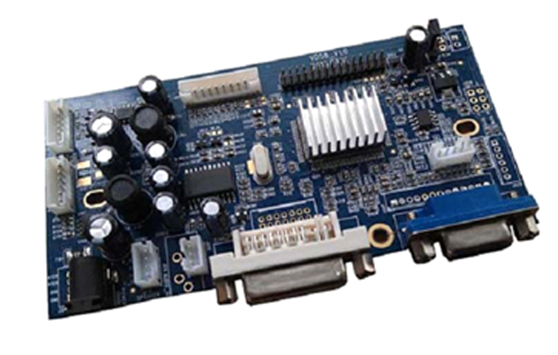Working principle of HDMI interface driven by LCD
Date:2019-07-19
Previously, we introduced the HDMI interface of LCD driver board. Today, we will introduce the working principle of HDMI interface of LCD driver board
 This is an architectural diagram of HDMI interface. From the signal source on the left, you can see that the source of HDMI interface can be any device supporting HDMI output, and the access terminal can also be any device with HDMI input interface. Whether they are audio, video, or control devices, HDMI interfaces can be used.
This is an architectural diagram of HDMI interface. From the signal source on the left, you can see that the source of HDMI interface can be any device supporting HDMI output, and the access terminal can also be any device with HDMI input interface. Whether they are audio, video, or control devices, HDMI interfaces can be used.
The data signal in HDMI interface adopts TMDs to minimize the transmission differential signal protocol. This data transmission protocol has been widely used in DVI interface. And the data signal on HDMI interface also uses this protocol. This protocol converts standard 8bit data into 10bit signals and uses differential transmission during the conversion. Differential transmission technology has been widely used in data transmission of Gigabit Ethernet.
Three TMDs data channels can be used in the transmission of audio and video data in HDMI interface. Video information is converted into 24bit pixel data in the city during transmission, and 10bit data can be transmitted in each clock cycle. The pixel clock cycle transmission ratio is approximately 25MHz to 165mhz. Generally speaking, the pixel clock transmission ratio of standard NTSC 480i interlaced signal is about 13.5mhz. If the ratio of transmission signal is less than 25MHz, HDMI will use automatic cycle technology to fill the code rate, and increase the code rate of signal to 25MHz. HDMI interface can transmit up to 165m pixels per second, which is quite amazing. In the future, it will be enough to cope with the signal transmission task of high bit rate and high data stream home appliances.
HDTV has the highest standard of 1080p, with a resolution of 1920x1080 per screen, and 60 frames per second( 1080p@60 ), then the final pixel clock transmission ratio is 124.4mhz. Therefore, HDMI interface can handle all kinds of applications of consumer electronics products at ease. HDMI also supports dual interface parallel mode, which provides an amazing 330mhz transmission ratio. But at present, this kind of double parallel HDMI interface will not be used for the general consumer class.
The encoding method of video signal used in HDMI is RGB format, such as YCbCr 4:4:4 or YCbCr 4:2:2 format, each of which is 24bit. YCbCr is a format of digital video signal, which is similar to YPbPr format( At present, the component output of DVD player is in ycbcr/ypbpr format) this video signal standard is what we often call "yuy". Y means brightness, it does not have information about the color of the image. It is only responsible for recording black and white information in the image. CB is the difference between blue and brightness (B-Y) in the image, while Cr is the difference between red and brightness (R-Y). Then the three values of Y, CB and Cr define the sampling rate of video coding. The "4" above represents the sample rate when NTSC or pal is used, i.e. 13.5mhz. So we see 4:4:4, which means that the coding sampling rate of Y, CB and Cr is 13.5mhz. The sample rates of CB and Cr in 4:2:2 format are 6.75mhz respectively. Now you can clearly distinguish which of the two YCbCr formats has better quality.
In HDMI interface, audio signals can use 2 to 8 channels, and the sampling rate of each channel is 192Khz. In addition, HDMI interface also provides DDC display data channel, which will send configuration information and data format information to video receiving device. The receiving device can read the information of the e-edid enhancement extension display identification data. Finally, HDMI interface also provides CEC consumer electronic control channel, which can control the operation of audio-visual equipment.




